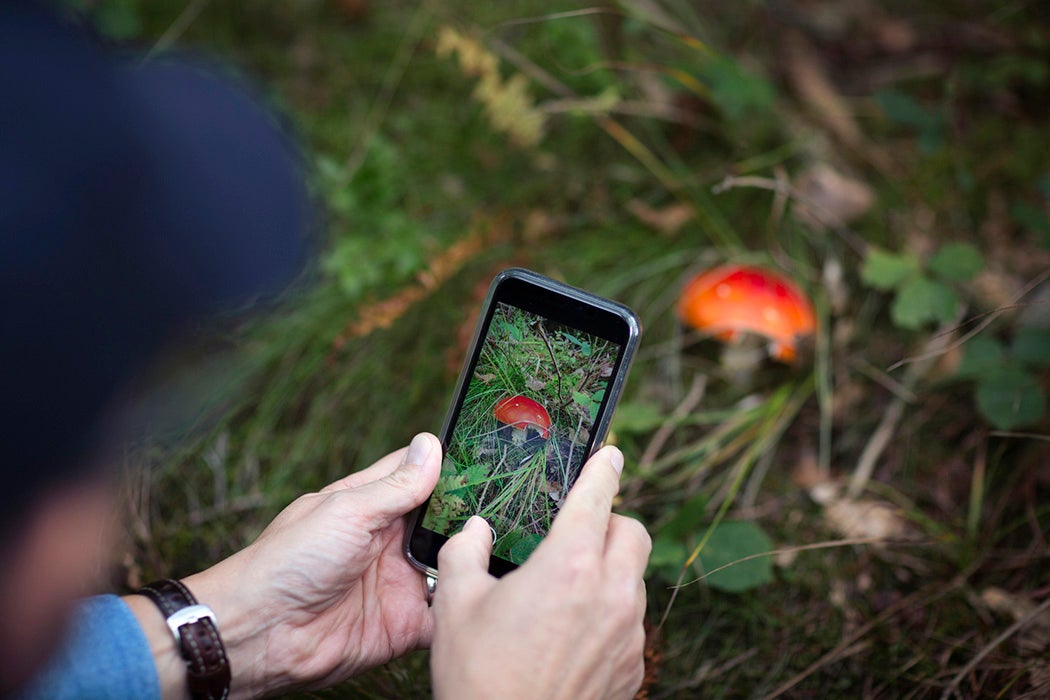The citizen-science database iNaturalist is closing in on 49 million observations. This app-based initiative of the California Academy of Sciences and National Geographic allows anyone with an internet connection to upload location-coded images and sounds of plants and animals. If the observer doesn’t know what they’re looking at, other participants or the app’s artificial intelligence ID function may be able to help.
Begun as a master’s-degree project of three students at the University of California, Berkeley’s School of Information in 2008, iNaturalist has become one of the most popular nature apps ever. Over a million and a quarter people are now participating.
So what is all this data good for? Entomologist David E. Bowles gives a good example: tracking introduced and invasive species.
Bowles’s case study is the Japanese burrowing cricket (Velarifictorus micado), first spotted in the U.S. in 1959 in the District of Columbia; its true source is unknown, he writes, although introduction via “discarded or escaped fishing bait or via ornamental plants” is possible. Since then the species has moved to the north and west.
“Although generally thought of an urban species associated with human habitation, some specimens are being captured in more remote areas, which is attributed to this species being macropterous and dispersing through flight,” writes Bowles. (Macropterous means having large wings.)
Besides traditional entomology research methods, like trapping specimens, Bowles reviewed observations on iNaturalist and the more specialized BugGuide to expand the previously published range maps for this species. While the burrowing cricket isn’t known to be invasive—that is, a threat to native species—its now documented expansion into “remote and atypical habitats” suggests it should continue to be monitored. Bowles concludes, “BioBlitzs involving citizen scientists and internet-based public data sources present passive but sound tools for documenting the occurrence and spread of easily identifiable species.”
A BioBlitz is a short-term, continuous, intensive survey of biodiversity in a given location. Often twenty-four hours in length and involving multiple participants, including scientists, naturalists, students, and volunteers, BioBlitzes attempt to give an overall indication of species richness. iNaturalist has become the real-time data repository for many of these events.
Scientists Nicholas B. Pollock, Natalie Howe, Ivelisse Irizarry, Nicholas Lorusso, Ariel Kruger, Kurtis Himmler, and Lena Struwe suggest that longer-term “personal BioBlitzes” can be beneficial in combating “species blindness” and the lack of awareness of biodiversity, even in heavily urban areas.
Pollock et al. note that “broad and detailed knowledge about common species in everyday life has decreased among the public.” iNaturalist can open people’s eyes.
Weekly Newsletter
“Putting a name to a species we encounter in our everyday lives helps us understand where these organisms are in nature, their conservation status, and their human uses, and it also helps us develop an appreciation for other places and species on Earth,” they write.
iNaturalist has become a tool for learning about the life around us, potentially increasing support for conservation, biodiversity initiatives, and habitat restoration. There are personal advantages as well, since being out in the natural world, the authors note, has “general health benefits such as stress reduction.”
Once you start looking, you start seeing a lot more.
Support JSTOR Daily! Join our new membership program on Patreon today.







